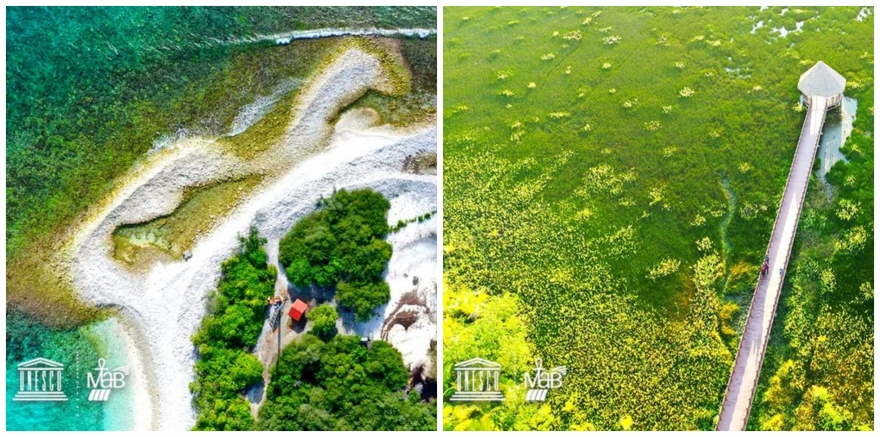
Fuvahmulah and Addu Atolls of Maldives has been recognized as UNESCO Biosphere Reserves. The announcement was made on Wednesday (October 28), during the 32nd session of the UNESCO International Coordinating Council of the Man and the Biosphere Programme hosted online.
These southernmost atolls are the second designated biosphere reserves of Maldives following Baa Atoll, which was inaugurated as a UNESCO Biosphere Reserve in 2012.
Vice President of Maldives, Faisal Naseem congratulated the cities on the new designation and thanked the organizations and government bodies involved with making the official declaration, also “facilitating and ensuring the sustainability of our natural environment,” said Faisal.
Minister of Environment, Dr. Hussain Rasheed Hussain said: “UNESCO Biosphere Reserve status for Fuvahmulah and Addu is especially important not only for the people of two cities, but today is also a historic day for the whole Maldives, a nation of coral atolls and reefs that depend heavily on these wonders of nature for their livelihoods and sustenance, which at the same time is threatened by climate change and unsustainable use of natural resources.”
UNESCO biosphere reserves seek to reconcile human activity with the conservation and sustainable use of biodiversity. They are a central element of UNESCO’s research and awareness-raising work to foster innovative sustainable development practices and combat the loss of biodiversity supporting communities and Member States’ understanding, valuing and safeguard the living environment.
Addu Atoll Biosphere Reserve
Addu, the southernmost atoll of the Maldives, comprises a total of 30 islands, 17 of which are uninhabited. It is one of the most diverse coral reef ecosystems in the Maldives including lagoons, reef passes, seagrass beds, sandbanks, coral islands, lush tropical vegetation, mangroves, wetlands, brackish lakes locally known as kilhis, agricultural land and residential areas. About 14,352 ha of its total area of 17,174.40 ha are marine areas, with an outstanding biodiversity that includes over 1,200 fish species. It is home to internationally threatened species and an important habitat for migratory birds. Most of the inhabitants make a living from fisheries and tourism related to underwater sports. The Maldivian atolls are severely threatened by rising sea levels due to climate change and by an increasing number of invasive alien species, both of which require action at the regional and global levels. The establishment of Addu Atoll Biosphere Reserve reinforces ongoing efforts to manage coral reef ecosystem services through sustainable development.
Fuvahmulah Biosphere Reserve
A large island in the southern part of the Maldives, the biosphere reserve encompasses an entire atoll ecosystem, including the most diverse of coral ecosystems in the country with healthy habitats and unique coral sand beach formations. The surface of the island is in the form of a very shallow bowl with two mangroves and wetlands (locally known as Kilhi) at medial low points, forming two small linked sub-catchments. These Kilhis have influenced the lifestyle of the island’s inhabitants, who make a living mostly with tourism, small-scale fishing and agriculture.
Please login to Comment